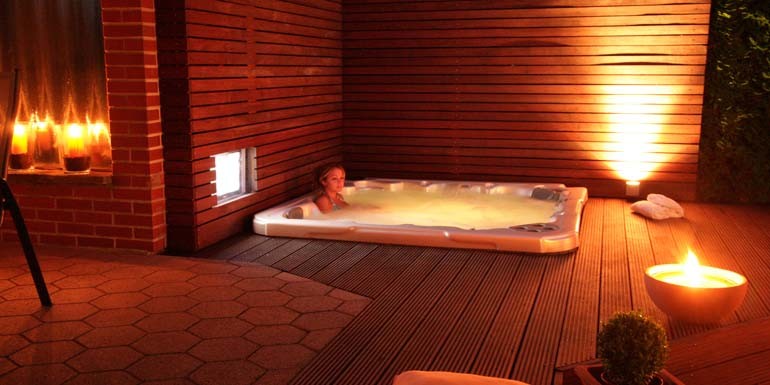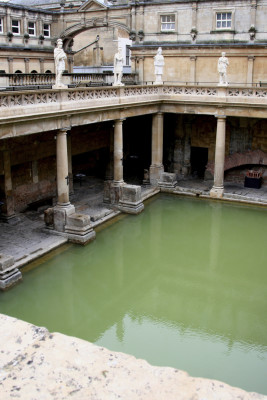By Vic Walker

Hot tubs and warm-water therapy have been around for centuries, and sometimes the rich, innovative, wellness-based history they have is overlooked. The practice of using hot or cold springs to cure ailments dates back to prehistoric times.
After a long tough day, hot tub owners look forward to a nice rejuvenating soak in warm water, as it helps to relieve stress and rejuvenate tired, weary bodies. However, when did soaking in hot water become a common practice for wellness? Where did it all start and why does it make people feel good? This article will review the history of salus per aquam—health through water.
Ancient bathing philosophy
The very first ‘hot tubs’ were created by Mother Nature, not by man. Archaeological investigations near hot springs in France and the Czech Republic have revealed Bronze Age weapons, while in Great Britain, ancient legends credited early Celtic kings with the discovery of the hot springs in Bath, England.
Many societies used the benefits of hot water therapy for hygiene and health purposes. For example, the Egyptians were thought to use baths for medicinal purposes as early as 2000 BC. Evidence also exists of spa construction in 600 BC from Phraortes, King of Media. The earliest forms of hot tubs were nothing more than large vessels in which very hot stones were placed to heat the water.
In Japan, the first ‘onsen’ (hot spring) opened near Izumo around AD 737. This was followed by the development of indoor soaking tubs called ‘cypress ofuro,’ which were featured at ‘ryokan’ (inns) that resembled resort-like facilities, which focused on relaxation. It could be said that these establishments were the precursor to the modern spa retreat.

The ancient Greeks and Romans also strongly believed in the therapeutic benefits of hot bath and mineral waters. Although the concept was largely reserved for the wealthy class, it was soon available to all in the form of public baths, which, at the time (460-370 BC), were considered healthy and beneficial for most diseases.
During this period, Hippocrates proposed a theory that all diseases are caused by an imbalance of bodily fluids. To regain balance, a change of habits and environment was advised, which included bathing, perspiration, walking and massages.
Following Greek methodology, Roman spas also had emphasis on medicinal purposes and were used largely as treatment centres for both wounded and healthy soldiers during periods of war. Spa treatments consisted of application of water to afflicted parts of the body and/or immersion of the whole body in the water. Early on, these destination spas had little in common with the luxury-laden resorts of today.
The science of healing
Soaking in a hot tub is long known to make bathers feel better, but why? What is actually happening physically and psychologically? The answers to these questions differ depending on which of the concepts of therapeutic heated water immersion one is referring to.
Formally called hydropathy, hydrotherapy utilizes water for the relief of pain and the treatment of certain illnesses. It is the generic term for water therapies using jets, underwater massage and mineral baths. Synonymous with the term ‘water cure,’ which was used by practitioners in the 19th century, these treatments use physical water properties, such as temperature and pressure to stimulate blood circulation and treat the symptoms of certain diseases (e.g. rheumatoid arthritis and fibromyalgia).
Balneotherapy is derived from the Latin word balneum, meaning ‘bath.’ This term generally applies to any of the treatments performed at a spa facility. Balneotherapy refers to the medical use of the spas, as opposed to the recreational use. Treatments may involve using hot or cold water to create relaxation or stimulation by using moving water and massage.






